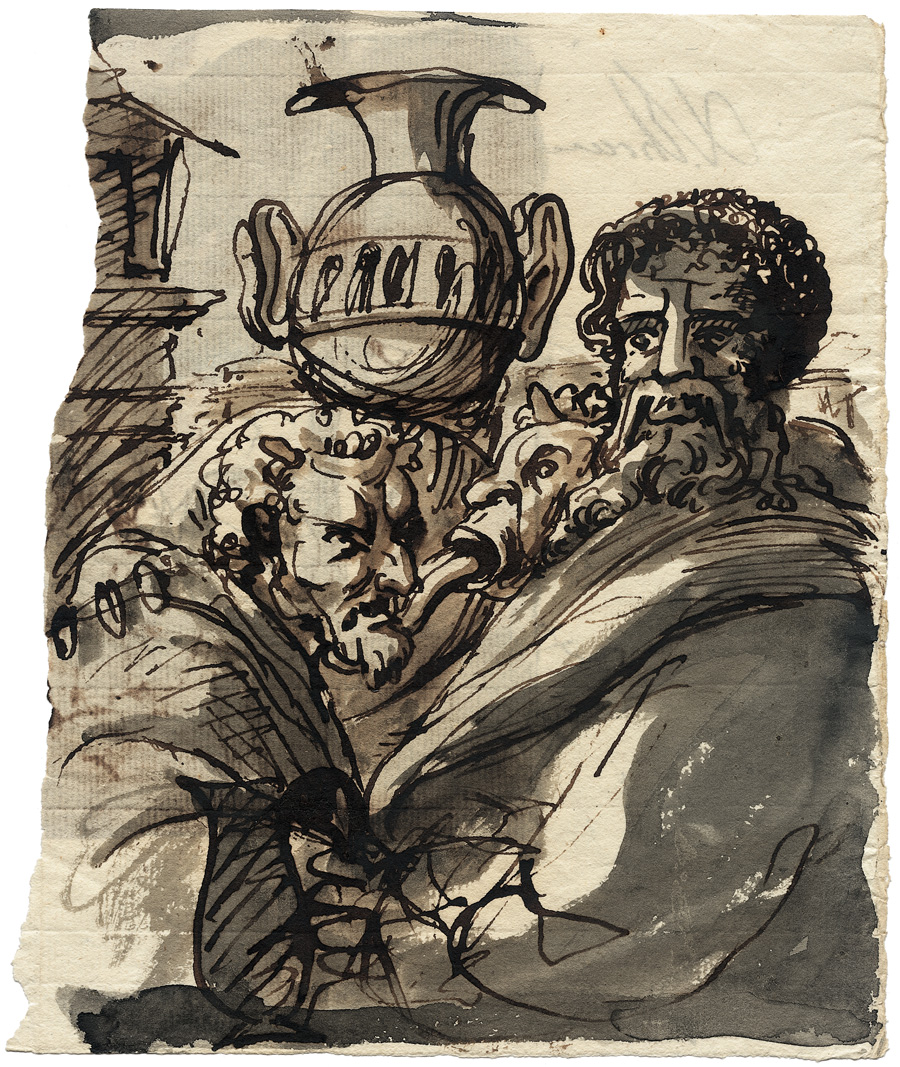Loading the page ...
Carl August Ehrensvärd
(1745 Stockholm – 1800 Örebro)
Antique Scene. Pen and brown ink, brown and gray wash. 20.6 x 17.2 cm.
The personal career of Carl August Ehrensvärd is remarkably varied and absorbing. He was not only a highly decorated naval officer, but also distinguished himself as a draughtsman, architect and designer as well as an original contributor to the philosophy of art. The stimulus for Ehrensvärd’s artistic activity was provided by a study journey through Holland and France, which he undertook in 1766. From spring 1780 to autumn 1782 Ehrensvärd was in Rome, whence he visited Naples, Paestum and Sicily, pursuing his interest in the art of antiquity. The observations he made during this Grand Tour formed the basis of the two works on art theory that he published in 1786: Resa til Italien and De fria konsters filosofi, whose ideas recall those of Winckelmann and Mengs and in which he expressed himself in favour of the primacy of a strictly Neoclassical style.
Ehrensvärd was an assiduous and passionate draughtsman. When comparing himself with his artist friends Nicolai Abildgaard and Johan Tobias Sergel he liked to refer to himself as a dilettante, yet his works show a high degree of originality. Even during his Italian tour Ehrensvärd’s initially Late Baroque drawing style had crystallized under the influence of his mentor Louis Masreliez into a Neoclassicist idiom, in which the power of the pure line and the emphatic outlining of the individual form are dominant. Over time, however, Ehrensvärd’s style became increasingly free and expressive, as the present drawing makes very clear. It is based on a spontaneous idea quickly committed to paper which owes its appeal to the liveliness of the characterization, boldness of line and the flowing, masterly use of washes. With humour and evident relish at his own use of mocking distortion Ehrensvärd has created a strong antithesis between the striking head of the proud, bearded Greek and the lecherous features of the two satyrs. Ehrensvärd was a gifted caricaturist who was influenced by Lavater’s theories of human physiognomy and concluded that the face was a mirror of secret emotions, passions and desires. In this respect he also exerted a strong influence on Johan Tobias Sergel, whose humorous portrait caricatures of his Stockholm friends show unmistakable stylistic parallels.
The verso has another figure sketch and is inscribed in pen and brown ink: "A. Ehrensvärd".
Contact us for further information